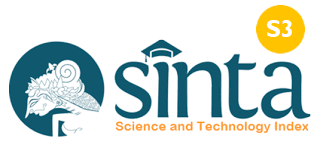Evaluasi Program Pembelajaran Ilmu Pengetahuan Alam (IPA) Pada Adi Widya Pasraman Di Provinsi Bali Dengan Model Evaluasi Context Input Process Product (CIPP)
DOI:
https://doi.org/10.37329/cetta.v6i4.2850Keywords:
Evaluation, IPA, Adi Widya Pasraman, CIPPAbstract
Science learning is one of the subjects included in the curriculum of Pasraman including Adi Widya Pasraman. However, so far, there has been no research aimed at evaluating science learning in Pasraman. In addition, the results of science literacy surveys in Indonesia recently have experienced a decline, so science learning needs to be evaluated. This research aimed to: 1) evaluate the science learning program at Adi Widya Pasraman in Bali Province using the Context, Input, Process and Product (CIPP) model and 2) analyze the effectiveness of the science learning program at Adi Widya Pasraman in Bali Province. This research was classified as an evaluative research study. The population and sample for this research were all Adi Widya Pasraman in Bali province. The instrument of this research was a questionnaire as the main instrument and was reinforced with observation sheets and interview guidelines. The data was analyzed descriptively and the effectiveness test was carried out using the Glickmann model. The research results showed that: 1) the aspects of context and process t are effective and good criteria; 2) the aspects of input and product are classified as sufficient and less effective; 3) overall the science learning program at Adi Widya Pasraman in Bali Province is quite effective.
References
Bahriah, E. S., Suryaningsih, S., & Yuniati, D. (2017). Pembelajaran berbasis proyek pada konsep koloid untuk pengembangan keterampilan proses sains siswa. Jurnal Tadris Kimiya, 2(2), 145–152.
Handayani, P. H., Tapilouw, F. S., & Wulan, A. R. (2018). Peningkatan sikap ilmiah siswa melalui pembelajaran berbasis praktikum virtual invertebrata. Jurnal Pelita Pendidikan, 6(1).
Kamayani, I. D., Sumantri, M., & Sudana, D. N. (2013). Pengaruh Model Pembelajaran Project Based Lerning Berbantuan Media Tiga Dimensi Terhadap Hasil Belajar Ipa Di Sd Gugus Ix Kecamatan Buleleng. Mimbar PGSD Undiksha, 1(1).
Pamungkas, A., Subali, B., & Lunuwih, S. (2017). Implementasi Model Pembelajaran IPA Berbasis Kearifan Lokal untuk Meningkatkan kreativitas dan Hasil Belajar Siswa. Jurnal Inovasi Pendidikan IPA, 118–127.
Primayana, K. H., Lasmawan, I. W., & Adnyana, P. B. (2019). Pengaruh Model Pembelajaran Kontekstual Berbasis Lingkungan Terhadap Hasil Belajar IPA Ditinjau Dari Minat Outdoor Pada Siswa Kelas IV. Jurnal Pendidikan Dan Pembelajaran IPA Indonesia, 9(2), 72–79.
Redanta, I. M. . (2018). Studi Evaluasi Berbasis CIPP Tentang Efektivitas Pengelolaan Proses Pembelajaran Seni Rupa di Kelas VII SMP N 7 Denpasar. Universitas Pendidikan Ganesha.
Stufflebeam, D. L. (2000). The CIPP model for evaluation. In Evaluation models: Viewpoints on educational and human services evaluation. Dordrecht: Springer Netherlands.
Trianto. (2010). Model Pembelajaran Terpadu. Jakarta: PT Bumi Aksara.
Wijaya, I. K. W. B., Kirna, I. M., & Suardana, I. N. (2012). Model Demonstrasi Interaktif Berbantuan Multimedia Dan Hasil Belajar IPA Aspek Kimia Siswa SMP. Jurnal Pendidikan Dan Pengajaran, 45(1).
Wijaya, I. K. W. B., Suastra, I. W., & Muderawan, I. W. (2014). Pengaruh Model Pembelajaran Generatif Terhadap Keterampilan Berpikir Kreatif dan Keterampilan Proses Sains Siswa. Jurnal Pendidikan Dan Pembelajaran IPA, 4(1).
Downloads
Published
How to Cite
Issue
Section
License
Copyright (c) 2023 I Made Wiguna Yasa, I Komang Wisnu Budi Wijaya, Ni Kadek Supadmini, I Made Putra Aryana, Nina D Hana

This work is licensed under a Creative Commons Attribution-ShareAlike 4.0 International License.
An author who publishes in the Cetta : Jurnal Ilmu Pendidikan agrees to the following terms:
- Author retains the copyright and grants the journal the right of first publication of the work simultaneously licensed under the Creative Commons Attribution-ShareAlike 4.0 License that allows others to share the work with an acknowledgement of the work's authorship and initial publication in this journal
- Author is able to enter into separate, additional contractual arrangements for the non-exclusive distribution of the journal's published version of the work (e.g., post it to an institutional repository or publish it in a book) with the acknowledgement of its initial publication in this journal.
- Author is permitted and encouraged to post his/her work online (e.g., in institutional repositories or on their website) prior to and during the submission process, as it can lead to productive exchanges, as well as earlier and greater citation of the published work (See The Effect of Open Access).
Read more about the Creative Commons Attribution-ShareAlike 4.0 Licence here: https://creativecommons.org/licenses/by-sa/4.0/.





